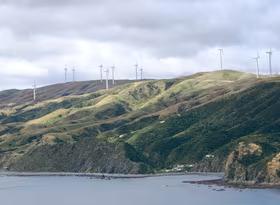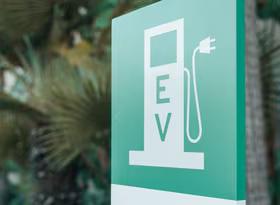Congested Thinking about Congestion Charging
The Dominion Post of Friday 18 April had a front page article on congestion charging for the Wellington region at peak commuting times. Congestion charges have much theoretical merit, but the conditions under which they deliver are beneficial are not that easy to assess. As I read through the article I became progressively more concerned about the proposed scheme. Let’s start by looking at those aspects of the proposed scheme that really are complete rubbish.
The first one is that hybrid cars might be exempt (similar to the London scheme) presumably because they produce fewer greenhouse gas emissions. However, a congestion charge is a very inefficient way to reduce greenhouse gas emissions. As I mentioned in a previous article, we have an Emissions Trading Scheme for that purpose and the last thing we want to do is put a different price on carbon saved in commuting than on carbon saved in say electricity generation. It makes about as much sense as claiming that dieting on a Wednesday is worth more than dieting on a Thursday.
The next possible exemption that was mooted is taxis. Again a taxi causes as much congestion per commuter journey as any other car – in fact probably more as chances are that the taxi is driven without a passenger between jobs.
Then we have goods vehicles. Another absurd exemption. Not only are they generally larger than the average car and thus require more road space, they also block lanes during pick-up and delivery. If there was ever a group of vehicles that should be discouraged from entering the city at peak times surely this it?
The last exemption proposed was for people with low incomes. The administrative costs of such an exemption are bad enough, but the central point of congestion charging is that everyone should face the same price signal for access to a particular road at a particular time. If this is deemed too costly for some groups, compensation should be via the tax and benefit system.
So that’s four of the dumbest aspects of the proposed scheme. Put up your hand if you’re reading this and suggested those features.
Now consider another argument in the report cited in favour of congestion charging, that it would boost the use of public transport. Well it probably will, but there are better ways to achieve that objective. Start by looking at those factors that most deter people from using public transport. Passenger surveys world-wide invariably come up with the same reasons – reliability, speed and comfort. With regard to Wellington buses, reliability is a key factor. Even real-time electronic timetables at bus-stops (as exist in other cities) will at least provide information to patrons. One of the worst aspects of waiting for a bus is not knowing if it’s come through early, if it’s late – how late, or whether it’s going to come at all.
Bus lanes through the city enhance both the speed and reliability of public transport, though I hesitate to promote this approach too much for fear that tomorrow I’ll learn that an urban transport planner has decided that a major arterial road is about to be partitioned to make room for a bus lane.
Let’s assume that the sillier aspects of the scheme wouldn’t be implemented. Is it then justified? A bit of theory is called for. Congestion is sometimes described in economics as an externality – where the actions of one group have an adverse effect on another group. Congestion though, presents an interesting case in that those who create the externality are also largely those on whom the cost initially falls. The aim of congestion charging is to find the balance between those who are prepared to pay for the use of the road at a particular time and place, and the full cost of expanding road capacity.
It is implicit in this argument that road capacity is adequate outside peak hours. Well, take a trip through Wellington and its environs during the weekend. There are areas where congestion is worse than during peak times and where it lasts for much longer periods of time. Subject to some thorough cost-benefit analysis, it seems to me that there are improvements to the roading network that need to be considered before congestion charging becomes the optimum policy to reduce congestion. For example, the new Karo Drive (the main route from the Basin Reserve to the motorway) should have been trenched as originally proposed, with a similar system for cross town traffic going east. A parallel development at Melling to that currently being built adjacent to Maungaraki is another example. And one need hardly mention the fiasco on SH 1 through Kapiti.
Finally, there are numerous other factors that contribute to congestion. For example it has probably not escaped the attention of the average commuting driver that the morning peak is much less congested during school holidays. Perhaps shifting the timing of the school day should be considered. Then there are particular intersections and stretches of road where traffic light phasing is just awful. And numerous places where very minor differences in lane layout would produce time savings and reduce congestion for both private and public transport.
There may be a role for congestion charging, and from an economist’s perspective it has some nice properties, but the scheme proposed last week for Wellington is a shambles.



